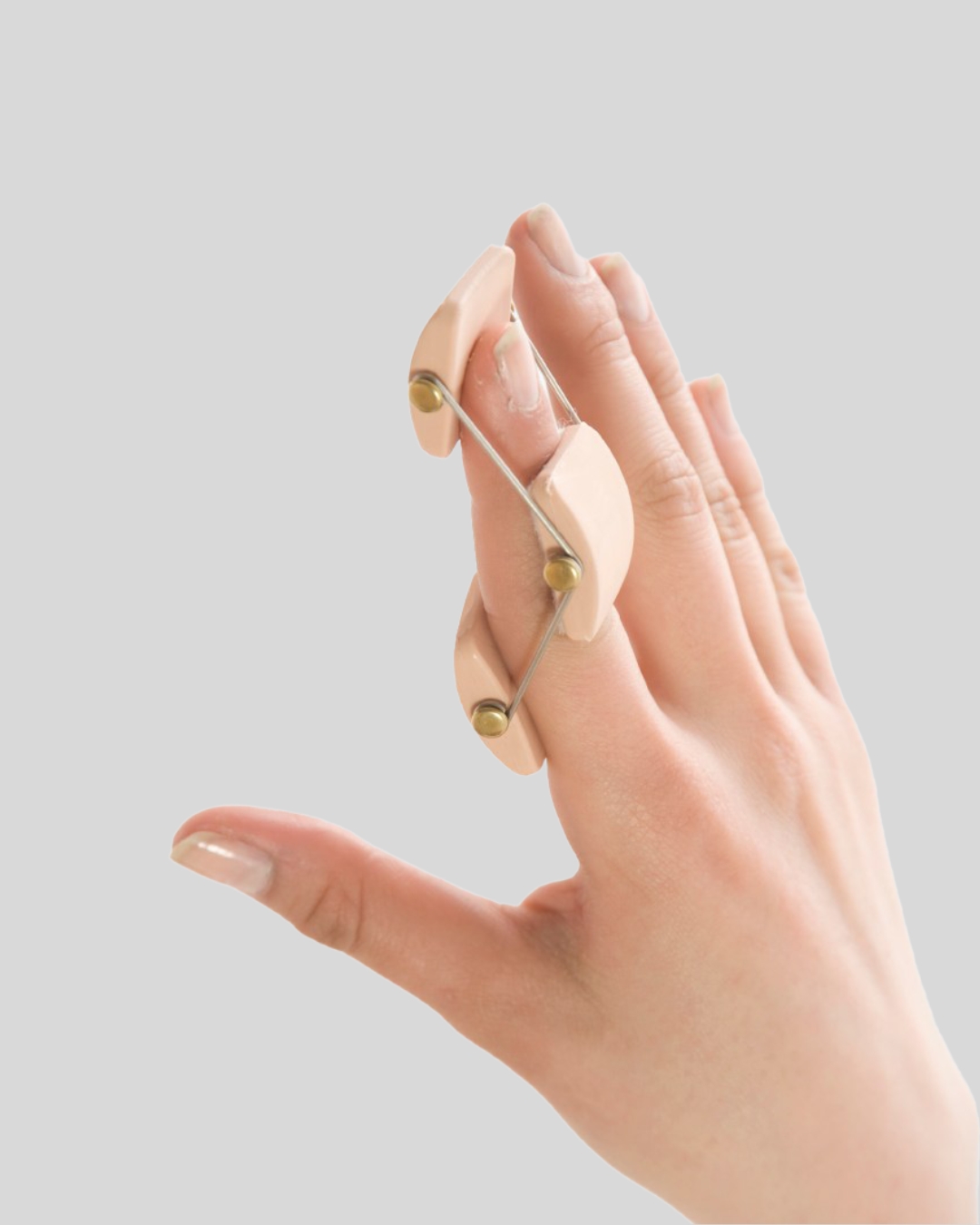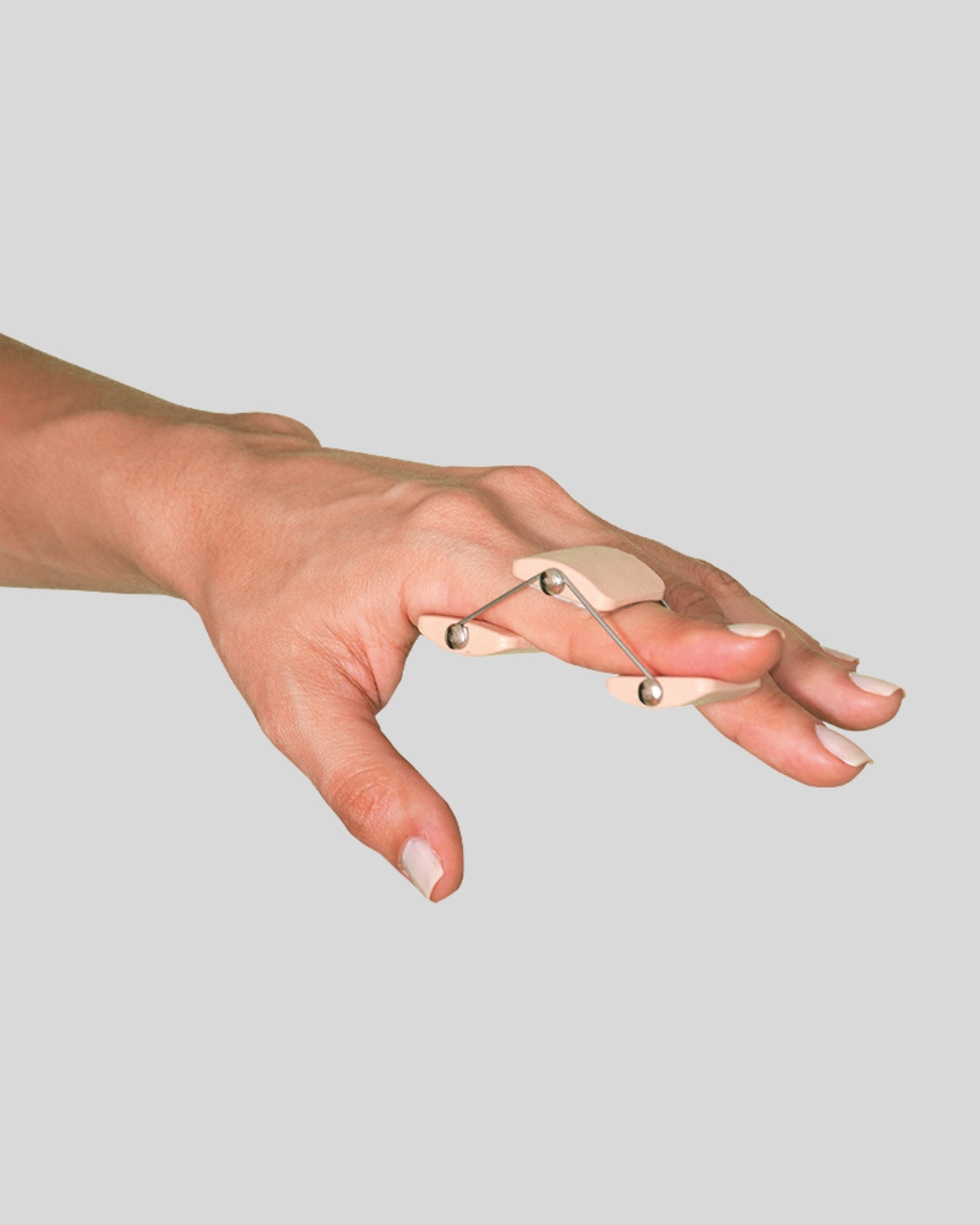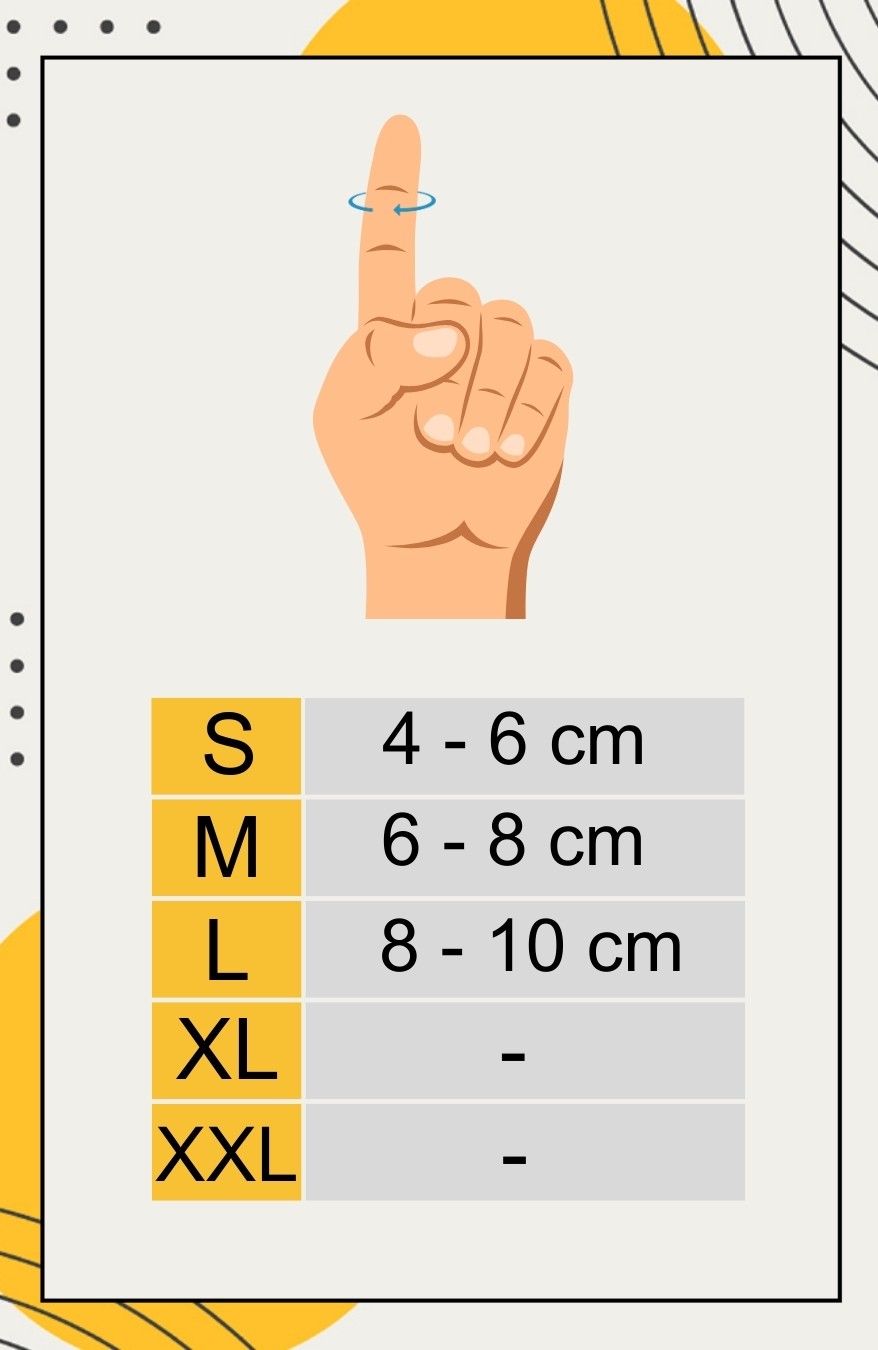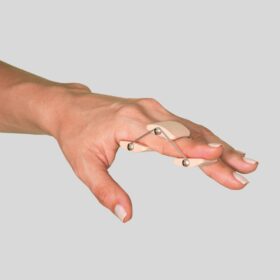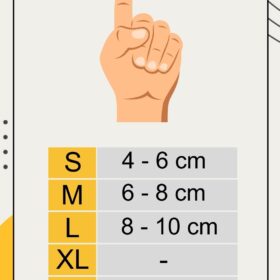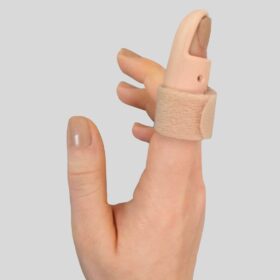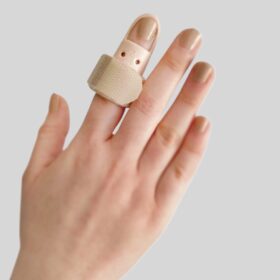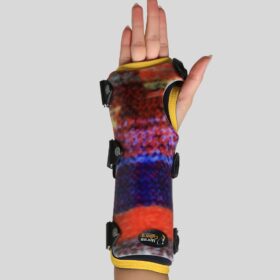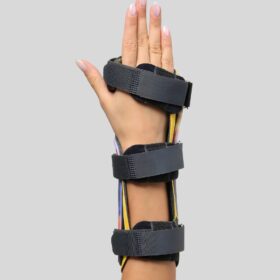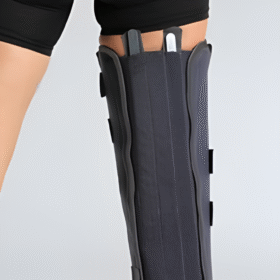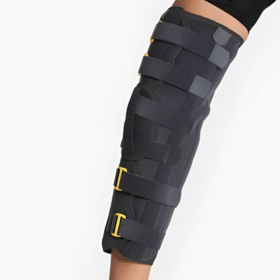The Finger Splint (Dynamic) provides extension immobilization for the finger, making it suitable for various finger injuries such as fractures, tendon and nerve injuries, as well as strains and sprains. Unlike static splints, a dynamic splint often incorporates elastic or spring mechanisms to apply continuous, gentle force that helps to improve range of motion while providing stability.
How to Use:
To use the Finger Splint (Dynamic), position the splint so that the affected finger is gently extended, and the splint’s framework aligns with the natural contours of your finger. The splint is typically secured with straps or bands around the finger and sometimes the hand, ensuring proper alignment and a comfortable fit without overtightening. The dynamic components (e.g., elastic bands, springs) should be positioned to apply consistent, gentle extension force to the injured joint while allowing for controlled flexion or preventing further flexion depending on the specific injury.
How It Helps:
The Finger Splint (Dynamic) offers several benefits for finger rehabilitation and healing:
- Extension Immobilization with Dynamic Force: It holds the finger in an extended position, which is crucial for healing specific types of fractures and tendon injuries where maintaining extension is vital. The dynamic component applies a constant, low-load stretch to improve extension or prevent contractures.
- Aids in Tendon and Nerve Injury Recovery: For injuries involving extensor tendons or nerves, this splint helps to keep the finger in a position that facilitates healing and prevents shortening of the injured structures.
- Supports Fractures: Provides stability to finger fractures, particularly those of the phalanges, by preventing movements that could displace the fracture site and interrupt healing.
- Manages Strains and Sprains: Limits movement in strained or sprained finger joints, allowing the ligaments and soft tissues to rest and recover, reducing pain and inflammation.
- Prevents Contractures: The dynamic extension can help prevent or manage flexion contractures that can develop after injury or surgery, gradually improving the finger’s range of motion.
Key Factors:
- Dynamic Components: Medical-grade plastic that provide continuous, gentle force to assist with finger extension.
- Targeted Support: Designed to support specific finger joints while allowing others to move, depending on the injury.
- Lightweight Construction: Made from lightweight steel for comfort during prolonged wear.
Recommended for: Individuals with finger fractures, extensor tendon injuries (e.g., Mallet finger that requires dynamic support in later stages), nerve injuries affecting finger extension, and severe strains or sprains that benefit from controlled extension immobilization. It is particularly useful in rehabilitation settings where progressive increases in range of motion are desired.
How to Care:
To care for the Finger Splint (Dynamic), gently clean it with mild soap and water. Ensure all components, especially any springs or elastic parts, are thoroughly dried to prevent corrosion or degradation. Do not use harsh chemicals or excessive heat, as these can damage the materials and affect the splint’s functionality. The straps or bands should be regularly checked for wear and tear and replaced if necessary to maintain proper support and dynamic tension.
Material:
The Finger Splint (Dynamic) is typically constructed from:
Shell: A lightweight frame made of medical-grade plastic that conforms to the finger’s shape.
Rigid: Integrated steel that provide the dynamic extension force.

